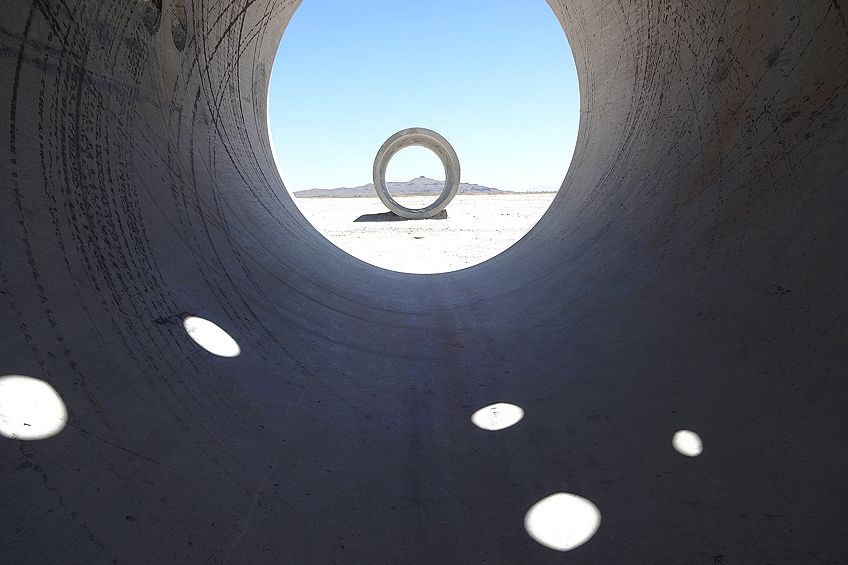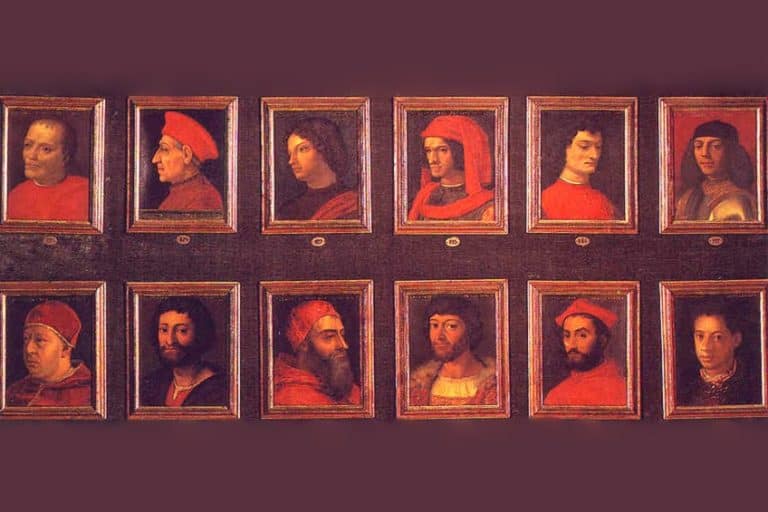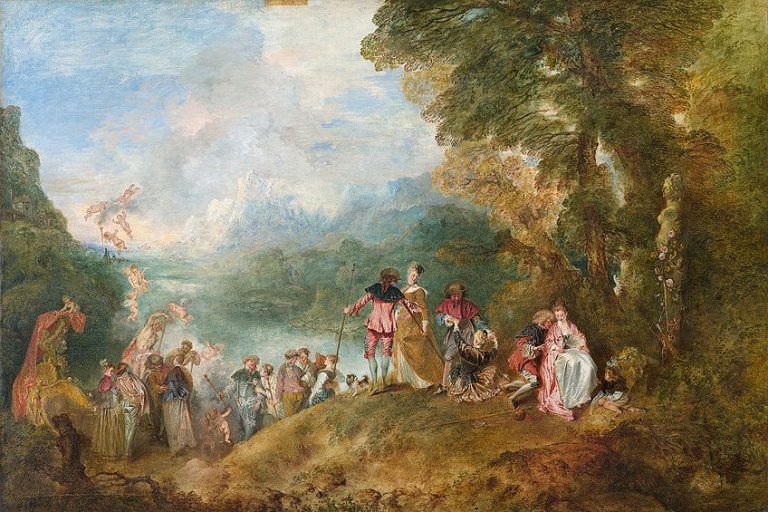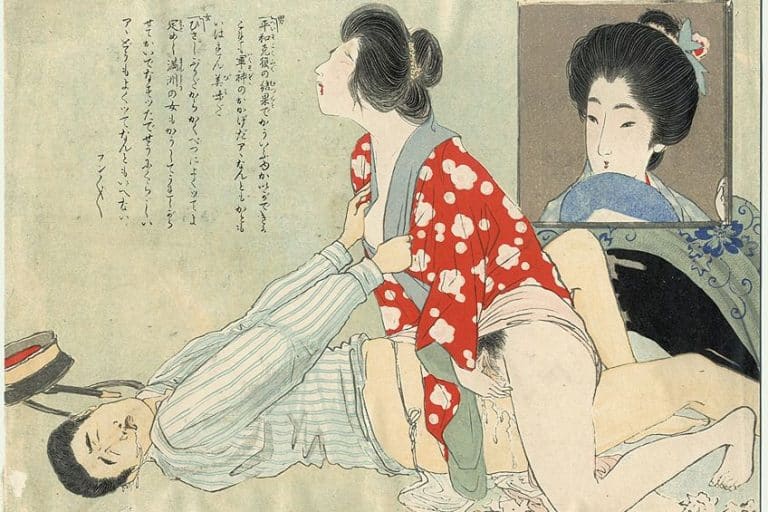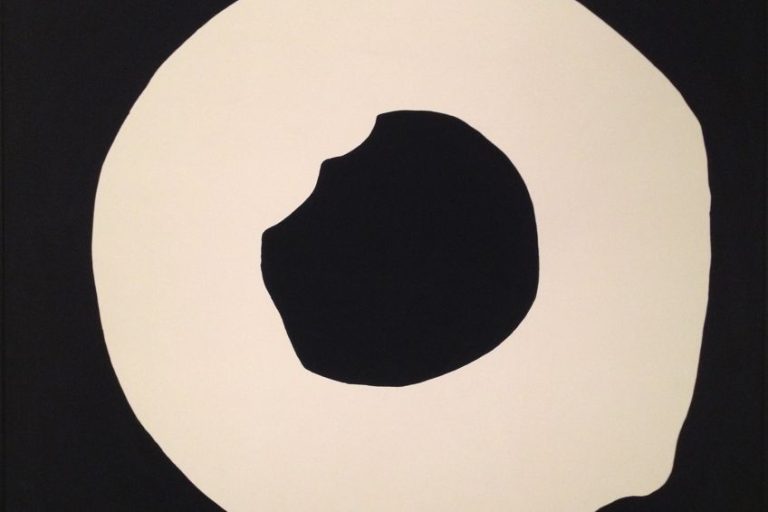Land Art – Famous Earth Artists and the Ephemerality of Land Art
The Land Art movement emerged during the 1960s and 1970s primarily in America and describes artworks that were made directly within the landscape using natural materials. Existing as an offshoot of Conceptual Art and Minimalism, Land Art inspired the creation of artworks that were purposely taken out of traditional artistic environments like galleries and museums in order to emphasize the commodification of art. Land Art spread to other countries, including the United Kingdom, with Earth artists creating iconic works that redefined the movement.
Land Art: An Introduction
Known as environmental art, Earth art, and even Earthworks at times, Land Art refers to the art form that began to develop in the late 1960s in America. After the peak of the Minimalism Art movement, Land Art formed part of the wider Conceptual Art movement that existed at the same time, when the traditional and formal elements that governed art creation were called into question. Land Art intended to increase public awareness of our relationship with the natural environment through the various thought-provoking artworks that were created.
Land Artists explored the boundaries of art through the materials they used and the location of works, often directly intervening in the landscape in order to construct their sculptures and installations. These artworks were often sculpted from the land itself or made into Earthwork art by using natural materials that were at the artist’s disposal. Favored materials included soil, vegetation, rocks, gravel, stones, twigs, and water that were typically found on-site, with the inclusion of these materials honoring the specificity of the site.
Heavily inspired by prehistoric works such as Stonehenge and the Pyramids, Land Art was often created in remote areas that were removed from urban society and quite inaccessible. Completely unprotected from the elements, these installations were left to organically decay within nature.
Their eventual disintegration emphasized their impermanence, which created a stark juxtaposition against art that was traditionally safeguarded inside galleries and other monitored settings.
The concept of site specificity was introduced to the art world by the Earth art that was created. These art sculptures placed artists at the forefront of their works as their pieces were not always available to viewers, meaning that artists were sometimes the only individuals who knew of the existence of their works. Due to this, artists would typically document their work through photographs, which they would then display at art galleries in place of their actual works.
This disruption in location called into question the idea of art existing as merely something to be viewed, as the Land Art movement protested the ruthless commodification of art during the 1960s. A return to nature was explored within these works, which spurred on the development of the environmental movement which saw Earth as the true home to humanity. Thus, Land artists began to sculpt Earth art that celebrated this ideal, with these works displaying a complete rejection of urban existence.
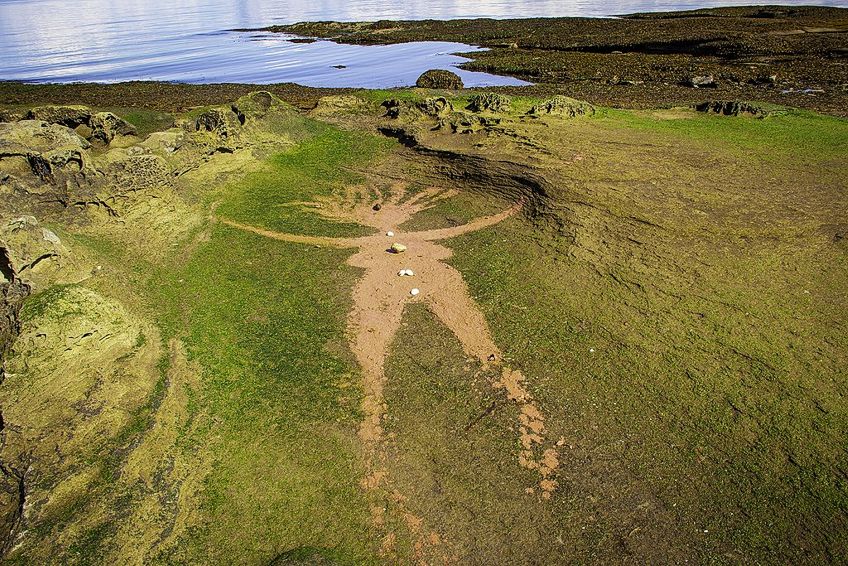
Museums and galleries were abandoned as the traditional setting for artistic activity, which gave artists the freedom needed to develop monumental sculptures that were outside the range of conventional transportable artworks. Due to this inaccessibility, photographic documentation and maps were instead presented in gallery places to represent the work that existed beyond the reach of art goers.
Taking heavy inspiration from other modern art movements such as De Stijl, Cubism, and Minimalism, many artists that were associated with Land Art were also involved within Minimal and Conceptual Art. Additionally, Land artists were drawn to elements of the Arte Povera movement, such as its simplicity and the plain everyday materials that were used within the artworks.
In order to create sculptures and installations outside traditional gallery and museum spaces, Land artists were forced to rely on the system they despised to financially support their expensive ideas. Immense landscape installations often involved land-purchasing and the use of earth-moving equipment, with wealthy patrons and private foundations often funding these elaborate and outrageous projects.
Perhaps one of the most notable pioneers of this movement was American artist Robert Smithson, whose 1970 artwork Spiral Jetty exists as the most famous Land Art sculpture to date. Smithson positioned rock, algae, and earth to form a 1500-foot spiral-shaped jetty that extended into the Great Salt Lake in Utah, America. Still in existence today, this work is visible periodically depending on the fluctuating water levels.
However, the sudden death of Smithson in 1973, as well as the unexpected economic downturn of the mid-1970s that stopped funding altogether, signified the end of the movement.
With the Land Art movement losing its most important figurehead, it began to fade out, with only a handful of artists continuing to create art according to the movement’s principles. Land Art slowly became part of conventional public art, with its name being incorrectly used to label any kind of art that existed in nature.
Despite the movement’s early influences, artworks created under these ideals did not appear until the end of the 1960s. The first documented exhibitions of Land Art, which featured prominent Land artists, were titled Earthworks and Earth Art. The works within these exhibitions were displayed at the Candace Dawn Gallery in New York and the Andrew Dickson White Museum of Art at Cornell University.
Considered to be one of the most experimental artistic periods within Western art, Land Art’s complete rejection of traditional art spaces helped define itself as a legitimate art practice. Land Art challenged established definitions of art and questioned its existence as something to be merely viewed and sold for a profit. Today, well-known Land Artists include Robert Smithson, Richard Long, Michael Heizer, Nancy Holt, Walter De Maria, Agnes Denes, Dennis Oppenheim, and Andy Goldsworthy.
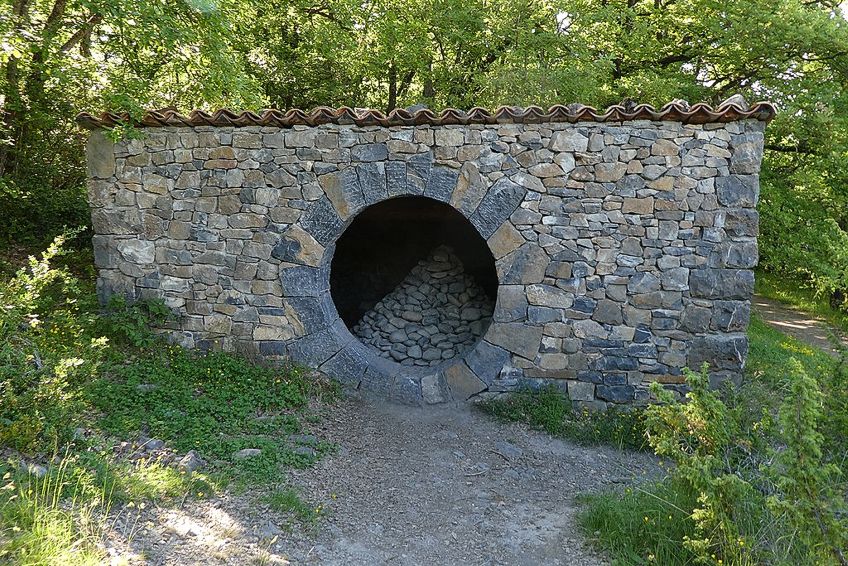
Characteristics and Influences of Land Art
Within the Land Art movement, the idea of ephemerality was emphasized within the works that were created. Most Earth art that existed did not focus on the beauty and aesthetic elements previously associated with art, as these artworks were made to highlight the movement’s rejection of the commodification of art.
Thus, the main characteristic of Land Art was that works steered clear from mainstream exhibition venues, as sculptures were instead constructed in locations that were remote and almost inaccessible to the general public.
Land Art was influenced to work outside the boundaries of the increasingly commercialized art market, as artists were inspired to create puzzling works that could not be marketed and sold as an object. Instead, Land Art was characterized by its transient nature, as the materials used within the works were expected to decay, melt, wither, or fall apart, which essentially limited artworks to remain temporary.
The use of photography to capture these works further distanced Land Art from the prior Conceptual Art movement, as taking photographs existed as a key characteristic within the movement. Without photographs, there would be no evidence to prove the existence of the work, with artists often presenting just the photography at art galleries and museums. However, these traditional viewing spaces exploited the necessity of camera-use to document these works, which reintroduced a conflicting commercial element back into the sculptures.
Whilst the key element making up Land Art was often its stateliness and location in a site-specific context, the preparation and photographing of the implementation of ideas and the final results were equally as important. This allowed these earthworks art to be exhibited in gallery settings despite the work existing in separate and remote locations. Thus, a link between the artworks and their photographs was created, as the public depended on this two-dimensional form of media to express the monumentality of the sculptures.
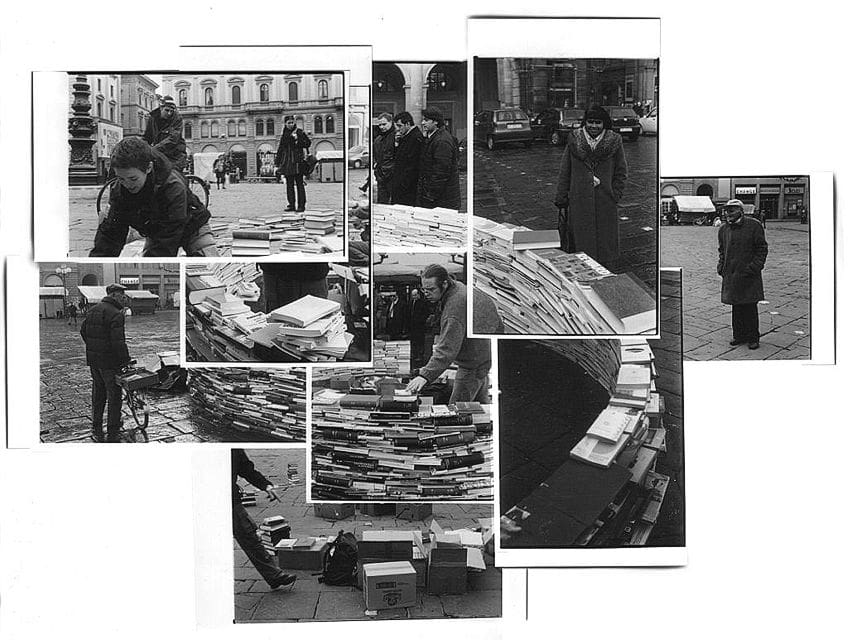
The essential characteristic of Land Art was that sculptures and installations were made out of natural materials often found at the site of development. Additionally, these artworks were made outside in various settings so as to interact with nature in different ways. Much like the introduction of the ready-made into artistic society, Land Art changed the definition of what a work of art could be as it widened the boundaries of art due to the materials and locations chosen.
Land Art was able to successfully reject museums and galleries as the accepted venue to host and view artistic production, as the period of social protest and political agitation during the 1960s and 1970s propelled the movement forward. In addition to this, the rise of the ecological movement acted as an important influence for the subsequent development and success of Land Art. Both movements discarded urbanism and its relevant life choices in favor of a utopian view of Earth, which viewed the planet as the ultimate home to humans.
Throughout the Land Art movement, the spirit behind some of the elaborate projects varied, despite all installations displaying a great appreciation for the meditativeness of long periods of time and a crucial sense of adventure. This was displayed in the art that was created out in nature and left to decay and wear away within its own time according to its own plan.
In terms of classifying the types of Land Art that existed, works can be divided into “Site” and “Nonsite” according to the theoretical differences that existed surrounding the physical context of the work. “Site” works typically referred to pieces that were site-specific, meaning that they only existed in a particular location as they were inextricably connected to their outdoor foundations. “Nonsite” pieces referred to works that were indoor pieces, as they denoted artworks that could be situated and exhibited in gallery settings.
However, both “Site” and “Nonsite” works, irrespective of how they were labeled and where they were viewed, existed as Earthworks due to the entropy of the materials that were used to create the pieces.
While artists believed that the preservation of art within settings such as galleries existed as an act of arrogance as works would lose their original meaning, many artists had to adapt their ideas after the recession that hit during the mid-1970s. Thus, many Land artists redirected their artistic production to accommodate formal and gallery spaces.
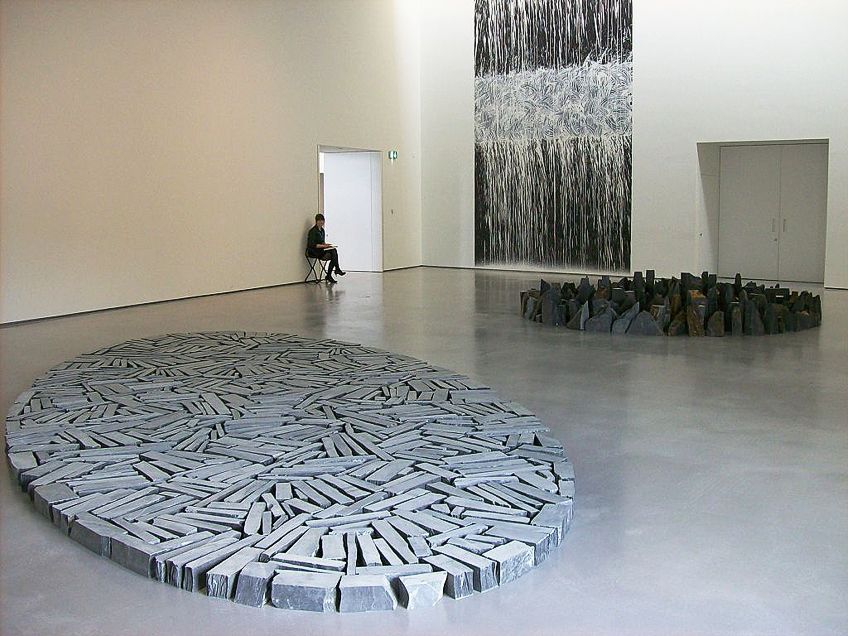
Famous Land Artists and Their Artworks
Throughout the Land Art movement, many famous Land Art works were created by notable artists. Some of these well-known Earth artists have been listed below, along with their iconic works that went on to further define the characteristics that encompassed Earth art.
Walter De Maria (1935 – 2013)
An important figure within the Land Art movement was American artist Walter De Maria, who also experimented with sculpture, illustration, and music composition. His works typically explored the relationship that existed between the relative and absolute, as he made use of geometric forms to create repetitions within his Land Art sculptures and installations. Working initially as a painter, De Maria began to experiment within Land Art through intersecting some elements of Minimal and Conceptual Art into his creations.
De Maria was heavily influenced by his artistic peers, as well as Dadaism, Suprematism, and Constructivism within art, with his works displaying his growing interest in viewer-interactive works. His installations made use of geometric shapes and numerical sequences which he arranged in various forms to create repetitive patterns, with De Maria generally making use of manufactured materials such as aluminum and stainless steel.
His most famous Land Art piece was The Lightning Field, created in 1977. His work consisted of 400 stainless steel poles that were over 20 feet tall and were arranged in a measured grid over a remote area of land in the New Mexico desert. At the top of each pole, there is a pointed tip that exists as the drawing point for lightning strikes, with the time of the day, weather changes, and other environmental factors dictating the various optical effects.
Viewers are subjected to both a sensory and psychic experience when visiting De Maria’s work, as they can walk inside the grid or view it from afar. Within this work, nature, landscape, and art meet to create the series of effects that are seen, as the poles appear invisible to viewers when they are not illuminated by lightning. De Maria paired brief moments of nature with manmade industrial materials, with his work capturing the essence of Land Art, as it became isolated through its remote location.
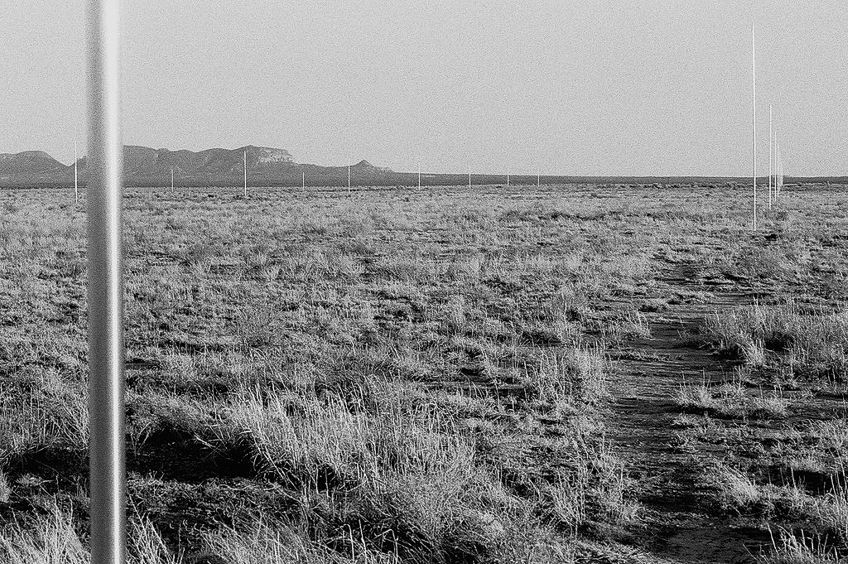
Robert Smithson (1938 – 1973)
Possibly the most famous Land artist of all time, as well as an influential pioneer of the movement, was American artist Robert Smithson. After starting his artistic career as a painter, Smithson was influenced by Minimalism and began to create new works by combining materials to form three-dimensional sculptures. His series of works were referred to as “Nonsite” works and were made up of earth and rocks collected from various locations, with these works going on to influence his later Land Art creations.
Smithson’s most well-known work, as well as the best-known work within the Land Art movement, is Spiral Jetty, created in 1970. This Earthwork art was built on and extended out into the shore of the Great Salt Lake in Utah and consisted of mud, salt, crystals, and basalt rocks that were constructed into a 1500-foot-long anti-clockwise spiral. It took Smithson, along with a crew, six days to construct the sculpture. Throughout the last few decades, Spiral Jetty could be viewed from above, as its visibility depends entirely on the water level.
Spiral Jetty, as well as Smithson’s other works, was typical of the Land Art movement due to its commercialization of the art market, as it was impossible to buy or sell the sculptures and installations that were created. Additionally, its visual instability was essential to its meaning as a Land Art sculpture, as the work was forced to depend on natural forces that were everchanging and out of one’s control.
Inspired by the radicalism that had developed in the art world, Smithson displayed a fascination with the ideas of dichotomy and entropy. Through the monumental installations he constructed, Smithson altered the notions surrounding sculptural form in modern art completely. Thus, Spiral Jetty remains the best example of Earth art, as it was an influential sculpture that successfully existed outside a gallery context and in the unrefined landscape.
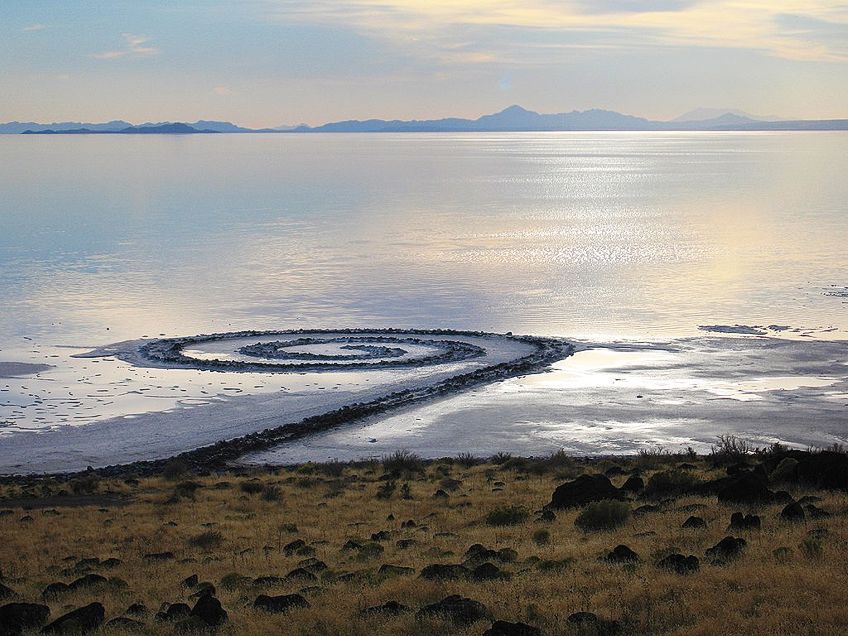
Dennis Oppenheim (1938 – 2011)
Another influential Land artist was Dennis Oppenheim, an American artist, sculptor, and photographer. Oppenheim’s early artistic practice displayed a philosophical questioning surrounding the nature, making, and definition of art, as he experimented with Conceptual and Performance art, film installations, and Earthwork art.
The artwork for which he is most known is his 1968 creation entitled Annual Rings, in which he drew large concentric circles into ice that covered a waterway. The purpose behind this was to draw on and emphasize the idea of time in both trees and snow, as Oppenheim worked with ice to draw circles that were representative of the pattern of rings that displays a tree’s age. Oppenheim also experimented with the limitations of space and time, as he drew these rings over a waterway that divided the United States and Canada, as well as their conflicting time zones.
In doing so, Oppenheim created a Land Art piece that placed greater focus and concern on the actual location and materials of the artwork itself, in addition to challenging the values of the ordering system that dictated how individuals were to live.
Nancy Holt (1938 – 2014)
Another well-known American Land artist was Nancy Holt, who was married to artist Robert Smithson. Holt was best known for her Land Art, installation art, and public sculptures that she produced throughout her career, as well as some film and photography that she experimented with. In 2017, Holt established the Holt/Smithson Foundation to continue the creative and inquisitive energy of both her and her late husband’s works, as they developed novel ways of exploring our relationship to the planet through their sculptural practice.
Holt began her career as a photographer before pursuing Earth art within the Land Art movement. Her photography inspired her later works, which focused on monitoring the positions of the earth, sun, and stars so as to relate these celestial elements to an established point. Out of all her works, Holt is best known for her large-scale environmental works, such as Sun Tunnels.
This installation was created between 1973 and 1976 and consisted of four massive concrete cylinders that each had a diameter of nine feet. These tunnels were arranged at exact geographical points so as to coincide with the sunrise and sunset during the summer and winter solstices. Holt punctured differing-sized perforations into the tunnels to create the shadows of the constellations of Perseus, Draco, Columba, and Capricorn. Each tunnel reacted differently to the sun, with these holes casting spots of daylight as well.
Those visiting the tunnels were able to see their gigantic form from two kilometers away, as these concrete structures were the only objects that were situated on the desolate piece of land. What sets Holt’s work apart from other Land Art was that it was not created to decay like most other Earth art. Sun Tunnels succeeded in drawing attention to the details of nature in a site-specific and isolated location as it was able to exist for an extended period of time.
Agnes Dene (Born 1938)
Hungarian-born American artist Agnes Dene started her artistic career within the Conceptual Art movement and is known for her works that have incorporated a wide range of media. She has experimented with philosophical writings, poetry, sculpture, and international environmental installations within her artworks. Dene survived the Nazi occupation before her family relocated to the United States, where she still currently resides and continues to produce works.
Dene’s seminal work is considered to be Wheatfield – A Confrontation, which was created in Battery Park in Manhattan during 1982. A field of golden wheat that covered over two acres of wasteland was planted, which grew for four months during the spring and summer. The field, which was hand sown, faced the Statue of Liberty and was regularly maintained, weeded, fertilized, sprayed, and watered via an irrigation system for its four-month lifespan.
In August 1986, the crop was harvested and yielded over 1000 pounds of golden wheat. After the wheat was harvested, it traveled around the world in an exhibition that highlighted greater issues of human struggle related to agriculture and sustainable land use.
Additionally, Dene’s piece emphasized the effortless pleasures that were associated with nature.
Michael Heizer (Born 1944)
Another influential artist within the Land Art Movement was Michael Heizer, who was known for his ability to build extensive works and to investigate the relationship between positive and negative spaces. Since the late 1960s, Heizer was an important figure within Land Art as his immense excavations and constructions were able to simultaneously elicit fear and admiration.
Heizer began his artistic career creating what he called “negative paintings”, with his most notable work created during 1969 and 1970 and titled Double Negative. After receiving financial assistance from art-dealing patron Virginia Dawn, Heizer dug out 240 000 tons of sandstone and rhyolite to create two trenches on the eastern edges of the Mormon Mesa in Nevada. After its completion, Heizer documented the production of his work through photography that he exhibited at the Dawn Gallery in New York, as few could visit the site.
Despite the work requiring a tremendous amount of labor, the finished product consisted of negative space, as it was essentially a 1500-foot-long canyon that viewers would enter and be surrounded by three walls of earth. Since the majority of viewers could not access it, Double Negative captured the essence of Land Art through its site-specificity and remoteness. Its presence within the desert also meant that the work would eventually disintegrate as a result of being exposed to the elements.
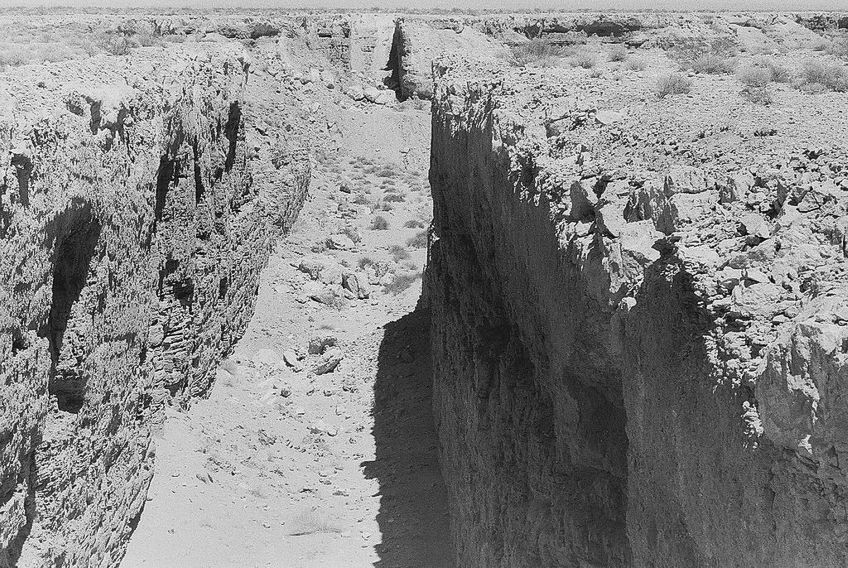
Richard Long (Born 1945)
A prominent British sculptor within the Land Art movement, which generally consisted of American artists, was Richard Long. He made landscapes the primary focus of his works, as he was inspired to manipulate the landscape in different ways during the late 1960s. Long began his direct involvement with nature by using walking as his main medium and created series of works made up of monotonous movements or long unaccompanied walks. In doing so, Long aimed to incorporate a more basic, intimate, and elemental level within his art.
The intention within Long’s work was to represent a dialogue that he personally created between humans and nature. His very first Land Art piece, which represented the beginning of his use of walking as a medium, was created in 1967 and was titled A Line Made by Walking. Within this work, Long created a straight line in a field of grass by walking back and forth across the same path in Wiltshire, England. The trampled grass was then juxtaposed against the unaffected areas of grass on either side of the line Long created.
Long emphasized the temporality involved within his artistic practice, as well as the short-lived adjustment that his work had on the land. His work adhered to the principles of Land Art through its site-specificity and ephemeral nature, with Long documenting his performance through photographs. A Line Made by Walking was a groundbreaking work when it first appeared due to its utter simplicity and fleeting nature.
Through the work’s transience, Long emphasized that it was essentially as worthless as a common object.
Andy Goldsworthy (Born 1956)
Another British artist who was considered an important figure within the Land Art movement was Andy Goldsworthy. A prominent sculptor and photographer, Goldsworthy focused on creating works that enhanced nature’s beauty, the impact of time, and the relationship between humans and land. Goldsworthy’s works can be categorized as permanent or temporary, with most of his works making up the latter.
Most of Goldsworthy’s artworks were made out of organic and impermanent materials, such as branches, leaves, ice, and rocks. These elements were chosen due to the fact that they were meant to disintegrate, which would cause his work to disappear. The ephemerality that existed at the core of Goldsworthy’s works reflected the constantly ever-changing natural world and the fragile ecology that has existed for decades. Once Goldsworthy’s works were destroyed by nature, the only proof of their existence was through photographs.
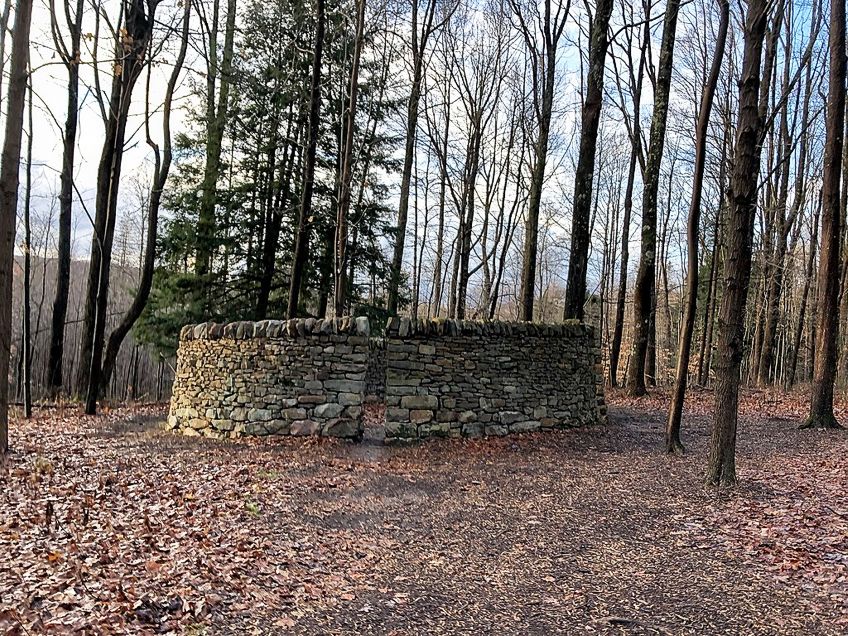
Following in Richard Long’s footsteps, Goldsworthy aimed to develop a temporal relationship within his work. One of his well-known works, titled Pebbles, broken and scraped white with another stone, created in 1985, demonstrates the simplicity with which he approached his works. The title faithfully explains the process Goldsworthy underwent to create the artwork, the materials that he used, as well as the physical properties of the work.
Although his works were documented in photographs, the titles he gave to his pieces helped to maintain some of the statuses of his works once the materials that made them began to erode and decompose. Through Goldsworthy’s manipulation of the elements within nature, his works questioned the relationship that humans held with history, landscapes, time, and organic processes. While his recent works are more permanent, Goldsworthy still explores his primary investigation of the landscape and the beauty of natural materials.
The Legacy of Land Art
The Land Art movement, which thrived during the 1960s and 1970s, existed at the same time as the Vietnam war, the hippie movement, and growing environmental concerns. When considering the basic principles that made up Land Art, it is easy to identify that the movement was against the traditional artistic market that created art within galleries. Thus, the Earthworks definition art that was created displayed art that was made to exist out of formal exhibition spaces.
Land Art existed to create monumental and ephemeral installations and sculptures outside of traditional art spaces, with many artists openly placing themselves outside of the system when creating art. In doing so, they made it impossible for the art market to reach them, which demonstrated the distance that was created. However, due to the costs related to constructing Earth art, many artists went underground to continue their work when the movement eventually disintegrated.
It was thought that the end of the Land Art movement implied that the reigning commercial art market had finally caught up to Land artists, yet some artists remained determined to maintain the concepts of Land Art in the works they created. While Land Art may have cast off its original notions and developed into other sectors of art, the essence of the movement remains today.
Seen as one of the most experimental periods of art history, Land Art developed new styles that consistently blurred the lines between different artistic genres. This led artists to experiment within various styles whilst still under the guise of Land Art. Due to this, one may still wonder: What is Land Art? Essentially, it is an art form that redesigned the world of nature surrounding us into a new and modern visual experience.
Summary of the Land Art Movement
What Is Land Art?
Land Art was a movement that emerged out of America during the 1960s and 1970s, which saw artists discarding traditional gallery spaces in favor of creating artworks out in nature. These pieces were subjected to the natural elements, meaning that they often only existed for a brief period.
What Is Considered as Appropriate Earthworks Definition Art?
An appropriate definition for Earthworks art is any artwork that was created out in nature, that made use of natural materials such as twigs and leaves found at the site of creation. These locations were often remote and inaccessible, meaning that they could not be viewed by art patrons. Often, the only documentation that these works existed was through the photographs that the artists took of them.
What Is the Most Famous Land Art Sculpture to Exist?
The most well-known Land Art sculpture is Spiral Jetty by Richard Smithson, which is still in existence today. He created this 1500-foot-long anticlockwise spiral on the banks of the Great Salt Lake in Utah, America. Despite being created in 1970, this work is still visible today depending on the water levels of the lake.
Isabella studied at the University of Cape Town in South Africa and graduated with a Bachelor of Arts majoring in English Literature & Language and Psychology. Throughout her undergraduate years, she took Art History as an additional subject and absolutely loved it. Building on from her art history knowledge that began in high school, art has always been a particular area of fascination for her. From learning about artworks previously unknown to her, or sharpening her existing understanding of specific works, the ability to continue learning within this interesting sphere excites her greatly.
Her focal points of interest in art history encompass profiling specific artists and art movements, as it is these areas where she is able to really dig deep into the rich narrative of the art world. Additionally, she particularly enjoys exploring the different artistic styles of the 20th century, as well as the important impact that female artists have had on the development of art history.
Learn more about Isabella Meyer and the Art in Context Team.
Cite this Article
Isabella, Meyer, “Land Art – Famous Earth Artists and the Ephemerality of Land Art.” Art in Context. April 1, 2021. URL: https://artincontext.org/land-art/
Meyer, I. (2021, 1 April). Land Art – Famous Earth Artists and the Ephemerality of Land Art. Art in Context. https://artincontext.org/land-art/
Meyer, Isabella. “Land Art – Famous Earth Artists and the Ephemerality of Land Art.” Art in Context, April 1, 2021. https://artincontext.org/land-art/.


